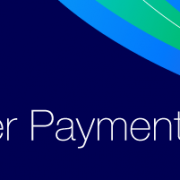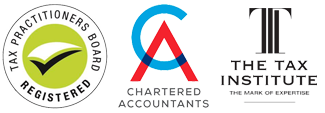ATO JOBKEEPER AUDIT TARGETS
JOBKEEPER
STEP BY STEP DETAILS FROM ATO ON HOW TO ACCESS IT
The ATO late yesterday released specific detail on exactly how you can access JobKeeper for your business. Below is the summary of what you need to do or CLICK HERE for the full ATO detail.
Please note that as further information will be released from the ATO, we will amend and make updates as required.
You may have pre-registered for JobKeeper, but you will be able to officially enrol in the JobKeeper scheme from 20 April 2020, using an online form on the ATO website. After you enrol, you will later identify your specific eligible employees and submit the information to the ATO.
If you have pre-registered with the ATO for an update on the JobKeeper Payment, you will soon receive a notification from the ATO when the online enrolment is available.
SUMMARY OF STEPS TO ACCESS JOBKEEPER
| STEP NUMBER | ACTION ITEM | RESPONSIBLE PERSON | COMPLETED (Y/N) |
| 1 | Register your interest and subscribe for JobKeeper payment updates | ||
| 2 | Check you and your employees meet the eligibility requirements | ||
| 3 | Continue to pay at least $1,500 to each eligible employee per JobKeeper fortnight (the first JobKeeper fortnight is the period from 30 March to 12 April) | ||
| 4 | Notify your eligible employees that you are intending to claim the JobKeeper payment on their behalf and check they aren’t claiming JobKeeper payment through another employer or have nominated through another business | ||
| 5 | Send the JobKeeper employee nomination notice to your nominated employees to complete and return to you by the end of April if you plan to claim JobKeeper payment for April. Keep this on file. https://www.ato.gov.au/Forms/JobKeeper-payment—employee-nomination-notice/ | ||
| 6 | From 20 April 2020, you can enrol with the ATO for the JobKeeper payment using the Business Portal and authenticate with myGovID. You must do this by the end of April to claim JobKeeper payments for April | ||
| 7 | In the online form, provide your bank details and indicate if you are claiming an entitlement based on business participation, for example if you are a sole trader | ||
| 8 | Specify the estimated number of employees who will be eligible for the first JobKeeper fortnight (30 March – 12 April) and the second JobKeeper fortnight (13 April – 26 April) |
SOME COMMON TOPICS/QUESTIONS
- How toCalculatea Fall in Turnover for the First Fortnight Starting 30 March 2020
To work out your fall in turnover, you can compare either:
- actual GST turnover for March 2020 with actual GST turnover for March 2019
- projected GST turnover for April 2020 with actual GST turnover for April 2019
- projected GST turnover for the quarter starting April 2020 with actual GST turnover for the quarter starting April 2019
Essentially this basic test compares the GST turnover of any single month from March to September 2020, or the quarters that start on 1 April 2020 or 1 July 2020, with the corresponding period in 2019. (Noting that you are only eligible from the date the turnover test is passed, JobKeeper is not backdated).
How you choose to project your fall in turnover is not dependent on whether you report on a quarterly or monthly BAS, though you can do that if it is easier. The turnover calculation is based on GST turnover, but there are some modifications, including disregarding GST grouping (where two or more associated business entities operate as a single GST group). The ATO will provide more information soon about applying the turnover test.
-
JobKeeper Payment –Employee Nomination Notice
Before you enrol for the JobKeeper Payment, you need to complete the JobKeeper employee nomination noticeto:
- notify your eligible employees that you intend to participate in the scheme, and
- ask them if they agree to be nominated and receive payments from you as part of the scheme.
Next steps:
- Download the JobKeeper employee nomination notice
- Both you and the nominated employee need to complete the form. You do not need to send this notice to the ATO, however you should keep a record to document that your employee has agreed that you claim the JobKeeper Payment for them.
Note: You should not use this JobKeeper employee nomination notice if you are intending to claim JobKeeper payments for an eligible business participant for example a partner in a partnership, an adult beneficiary of a trust or a shareholder or director of a company or a sole trader. A different nomination process will be required.
3. Business Owners Actively Engaged In Their Business
Other businesses in the form of a company, trust or partnership can also qualify for JobKeeper payments where a business owner (a shareholder, adult beneficiary or partner) is actively engaged in the business, or a director is actively engaged in the business.
The ATO will provide more information soon about the eligibility of these businesses for the JobKeeper payment.
4. Employees who have been Terminated
If you terminated an employee after 1 March 2020, you can re-engage them and they will be eligible if they met the eligibility criteria on 1 March 2020.
If you want to claim the JobKeeper payment for employees you have re-engaged, you will need to:
- confirm they want to be re-hired and participate in the JobKeeper scheme with you
- re-engage the employees you want to claim for
- ask them to complete the JobKeeper employee nomination notice and return it to you. You are required to keep this form as part of your record keeping obligations under the law
- start paying them a minimum of $1,500 (before tax) for each fortnight they are employed and you claim for
You will only be paid a JobKeeper payment for employees from the fortnight they were re-engaged. You cannot claim retrospectively for employees you re-engage
- Confirmation ofEligible Employeesyou will Claim JobKeeper Payment For
(available from 4 May 2020 onwards)You or a registered tax agent can apply for the JobKeeper payment for your eligible employees:
- Step 1 – Apply to claim the JobKeeper payment by logging in to the ATO Business Portal
- Step 2 – Ensure you have paid each eligible employee a minimum of $1,500 per JobKeeper fortnight before tax
- Step 3 – Identify your eligible employees in the application form by:
- selecting employee details that are prefilled from your STP pay reports if you report payroll information through an STP enabled payroll solution, or
- manually entering employee details in ATO online services or the Business Portal if you do not use an STP enabled payroll solution, or
- using a registered tax agent who will submit a report on your behalf through Online services for agents.
- Step 4 – Submit the confirmation of your eligible employees online and wait for your confirmation email or SMS showing it has been received
- Step 5 – Notify your eligible employees you have nominated them
- Step 6 – The ATO will pay you the JobKeeper payment for all eligible employees after receiving your application
- Step 7 – Each month you will need to reconfirm that your reported eligible employees have not changed through ATO online services, the Business Portal or via your registered tax agent. This will ensure you will continue to receive the JobKeeper payments from the ATO. You do not need to retest your reported fall in turnover, but you will need to provide some information as to your current and projected turnover. This will be done in your monthly JobKeeper Declaration report
- Step 8 – If your eligible employees change or leave your employment, you will need to notify us through your monthly JobKeeper Declaration report
- When toPay Your Employees
- You should pay your employees for each JobKeeper fortnight you plan to claim for. The first fortnight is from 30 March – 12 April and each JobKeeper fortnight follows after that
- For the first two fortnights (30 March – 12 April, 13 April – 26 April), the ATO will accept the minimum $1,500 payment for each fortnight has been paid by you even if it has been paid late, provided it is paid by you by the end of April. This means that you can make two fortnightly payments of at least $1,500 per fortnight before the end of April, or a combined payment of at least $3,000 before the end of April.
- If you usually pay your employees less frequently than fortnightly, the payment can be allocated between fortnights in a reasonable manner. For example, if you pay your employees on a monthly pay cycle, your employees must have received the monthly equivalent of $1,500 per fortnight.
Again, here are the relevant ATO links for you:
- Full ATO detail on JobKeeper – https://www.ato.gov.au/General/JobKeeper-Payment/
- JobKeeper Pre-Registration Form – JobKeeper payment
- Jobkeeper Employee Nomination Form – JobKeeper employee nomination notice
- ATO Business Portal – ATO Business Portal
It’s great to see some detail from the ATO on JobKeeper. We know you will have questions on this, talk to us for any clarification that you need.
7. Services NSW $10K Grant – Applications Now Open
Applications are now open for the NSW Government’s $10K grant for businesses experiencing a decline in turnover of >75% of revenue in a 2 week period – see link below for full application details.
https://www.service.nsw.gov.au/transaction/apply-small-business-covid-19-support-grant
We understand this is a stressful time. Please contact your manager at HYD Advisory for further information on (02) 8543 6800 or email them directly.
|
|





